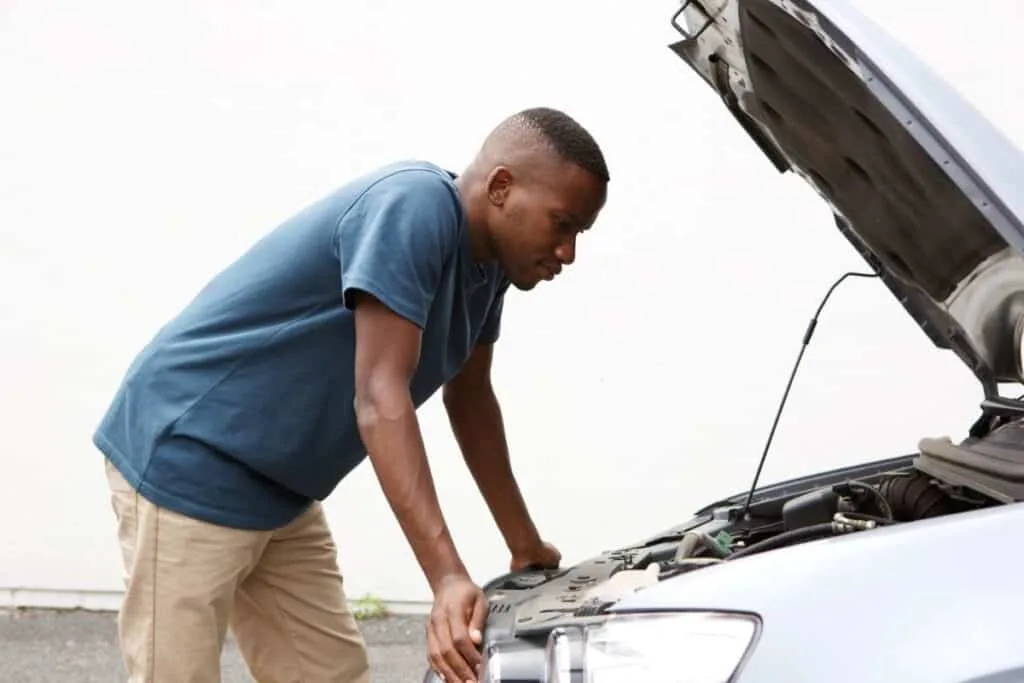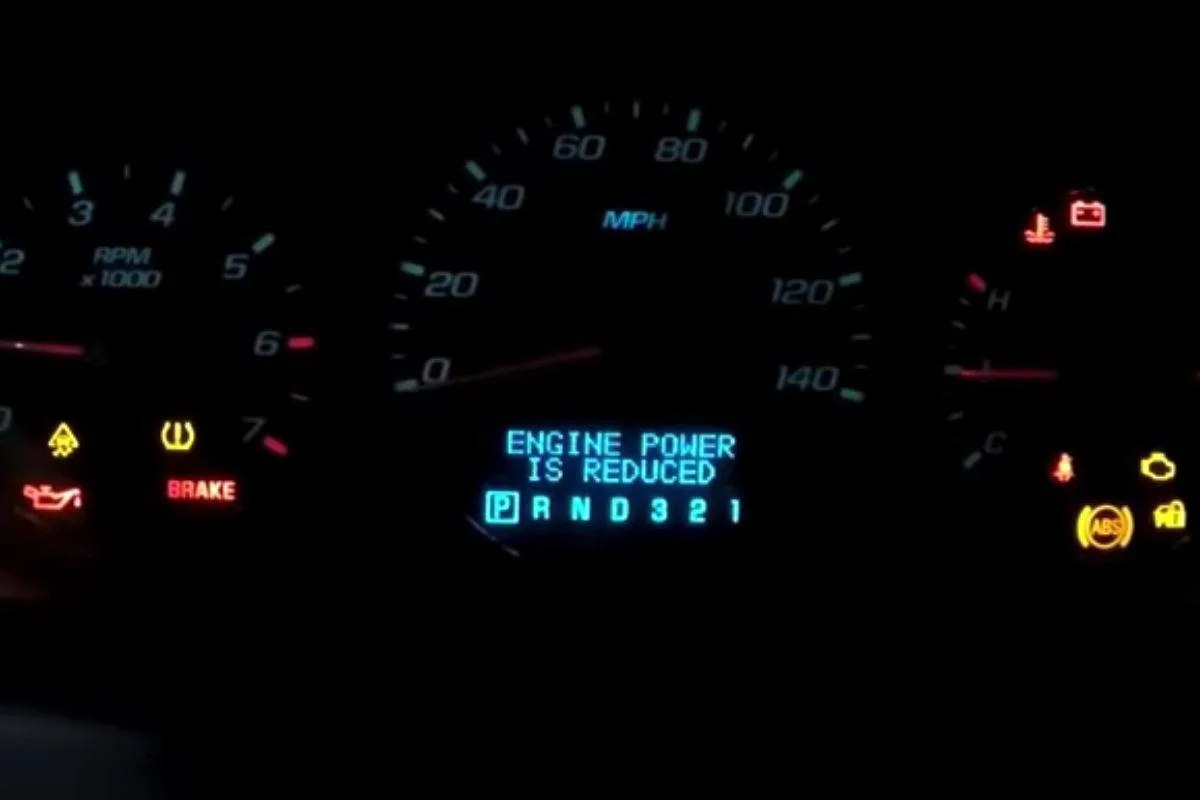You depend on your car to run well and let you know when there’s something wrong with it. Anytime a light illuminates on your vehicle’s dashboard, you can and should be slightly alarmed and head to a mechanic ASAP. The same goes for the “Reduced Engine Power” light, a light specific to certain vehicles.
A bad battery is not a typical reason for reduced engine power mode to be triggered. An issue with the vehicle’s throttle actuator control (TAC) system is the most common.
If your “Reduced Engine Power” light is illuminated and you’re stranded somewhere, don’t worry! I’m here to help you find out more about the “Reduced Engine Power” light, what it means, and what can cause reduced engine power.
What Does Reduced Engine Power Mean?
The REP (Reduced Engine Power) light is similar to the “Check Engine” light in that it indicates that something is wrong with your vehicle, but you don’t necessarily know what right away!
The lights are different in that a Check Engine light will allow your vehicle to keep going, while a REP light is accompanied by a physical response of a barely-moving vehicle.
The Most Common Sources of Reduced Engine Power
Unfortunately, when your Reduced Engine Power light comes on, there’s no one easy fix you can always try. There are lots of things that could be causing you issues.
Here are some of the most common causes of reduced engine power.
#1 System Problems
A problem with your car’s TAC system is the most common reason a REP light comes on.
TAC stands for throttle actuator control, and it’s an electric system that is found in many modern vehicles. The modern TAC system replaces older model vehicles’ mechanical throttle body system.
When you want to accelerate your vehicle, the electronic control unit (ECU) “watches” two accelerator sensors that determine how fast you want to go based on how you are pressing down on the pedal. The ECU then sends this information to the actuator motor, which controls how much air gets to your engine.
All of these functions are within the TAC system, and any one of these steps can malfunction when you have reduced engine power.
For example, one of the accelerator sensors can be broken or the whole throttle body itself can be broken or dirty, causing reduced engine power.
#2 Data Network or ECU Problems
One of the most costly reasons your REP light comes on is due to a problem with your vehicle’s computer system.
In modern vehicles, many networks and electric controls inside the automobile communicate with each other to get the vehicle going. When there’s something wrong with any of these links, this can make your engine power suffer.
#3 Loose Wires, Clamps, or Harnesses
Because your vehicle’s parts are connected with electricity to make all the parts work in harmony, there are many wires, clamps, and harnesses that play a part in this.
If any of these become loose or go bad in some way, your vehicle could go into reduced engine power mode.
#4 Bad Oxygen Sensor
The oxygen sensor keeps track of how much oxygen is coming out of the exhaust and also helps output the right amount of air for combustion.
If something goes wrong here, it’s likely to turn your vehicle into REP mode, as well as flash your “check engine” light.

How to Know If Your Vehicle is Running on Reduced Power
Whether you’re preparing for the worst, or just trying to figure out why your car won’t go like it used to, here are some things that happen when your vehicle is running on reduced power.
1. The “Reduced Engine Power” Light Comes On
Common in General Motors vehicles, the “Reduced Engine Power” light will come on if your vehicle starts running on reduced power.
This sometimes is turned on as a fail-safe mechanism to prevent your vehicle from further damage.
2. Your Vehicle Isn’t Responding to Acceleration
You know your vehicle is running on reduced power when the vehicle’s quickest speed is a snail’s pace.
Even pushing the pedal all the way to the floor won’t cause your vehicle to go very quickly when in REP mode.
3. Electric Elements in the Cab are Not Working
Sometimes, your vehicle will cut off some non-essential electric functions in the cab of your vehicle.
For example, you may not be able to work the lights inside your vehicle or run the radio system.
What to Do When Your Vehicle’s Running on Reduced Power
If you are out in traffic and your reduced engine power light comes on, drive it home or to the nearest mechanic.
The car will be extremely slow-moving and may be hard to shift, but you will still be able to drive it.
This is also called “limp mode.”
You should only drive the vehicle to your home or a repair shop. You shouldn’t try to continue to drive the vehicle like normal. Otherwise, you may cause unnecessary damage to your engine.
Another option is having the vehicle towed right from where you are at. This is especially a good idea if you are far away from a repair shop or your home.
Driving the vehicle is safe in “limp mode”, however, the best option is to not drive it and have the vehicle towed.
Conclusion
To reiterate the answer to the initial question, a bad battery does not cause reduced engine power.
Usually, bad batteries will cause the “Check Engine” light to come on, not the “Reduced Engine Power” light. The same is true with transmission problems. However, a weak battery may cause the vehicle to be underpowered.
A weak battery will also make it difficult for the car to start!
If you notice that your vehicle is running on reduced power, it’s best not to drive it. Take it home or to your nearest mechanic to get to the bottom of the issue so you can get back on the road again as quickly as possible.
